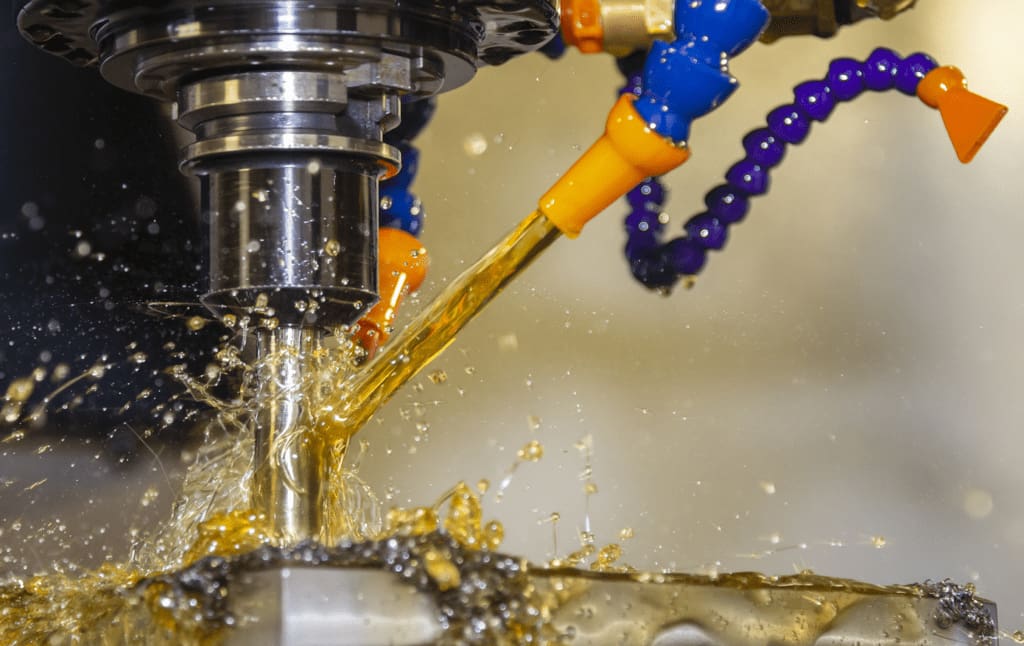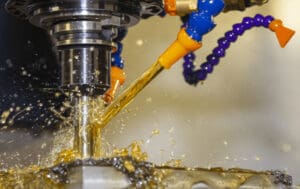Coolants might not be at the top of everyone’s list when we think about health and safety in our industry’s array of diverse and very different working environments. Yet in the vast majority of them, coolants and other metalworking fluids will play an important role in keeping machinery running safely.
Like everything else, care must be taken to ensure metalworking fluids are performing the vital functions needed to ensure work is done optimally and safely. Coolants are used during the machining process not only to provide cooling but also lubrication, and should typically be used for any form of milling, drilling or sawing. They aid performance and help to wash away swarf and particles, can help to provide corrosion resistance to materials and ultimately to prolong the lives of cutting tools and other consumable parts.
Coming in to contact with coolant fluids is an everyday risk which can happen in several ways. The most obvious is by touch while handling workpieces, changing tools or draining the fluid itself. Coolant can also easily be splashed on to the operator during the machining process, making maintenance of enclosures and use of personal protective equipment such as face guards, overalls and hand protection very important to keep skin contact to a minimum. Open cuts and broken skin can pose a risk, as well as poor hand hygiene or eating, drinking and smoking whilst working.
There are less obvious ways in which the coolant can come into contact with employees and operators. Inhalation is another form of exposure risk that must be guarded against carefully. Machining processes can involve high levels of energy and heat, easily transforming coolant fluids into vapours and mists which may be inhaled.
Potential health problems
Working safely with coolant fluids can lessen the risk of developing a range of health problems. The most common of these being skin irritations and bacterial infections such as dermatitis. Respiratory conditions such as bronchitis and asthma are also an increased risk for those breathing in vapours and mists.
Prevention of ill health
Given the obvious importance of coolant fluids and the risks to health when care isn’t taken to minimise the risks involved with exposure, it is vital to ensure that the coolant itself is maintained and given the same attention we give ourselves and the machinery we rely upon.
Firstly, ensure the equipment you already have is in place during operation. Splash guards, enclosures and available ventilation should all be used and any damaged or faulty equipment reported immediately. Follow good working practices and control the delivery rates of coolants carefully, again reporting any issues such as contaminants. Most importantly, perform regular checks on the condition of your coolant liquid by dip testing to monitor bacteria and PH levels. This is particularly important during the warmer summer months.
Prevention and monitoring keeps your workforce safer and your machinery in better working condition.
Record keeping
Record the data after every test. This can form an important part of your organisation’s due diligence and forestall expensive and damaging claims for illness or injury. It also gives you a vital early warning sign of problems..
For help and advice on machinery and coolant issues, get in touch today.
Published 17th February 2020


